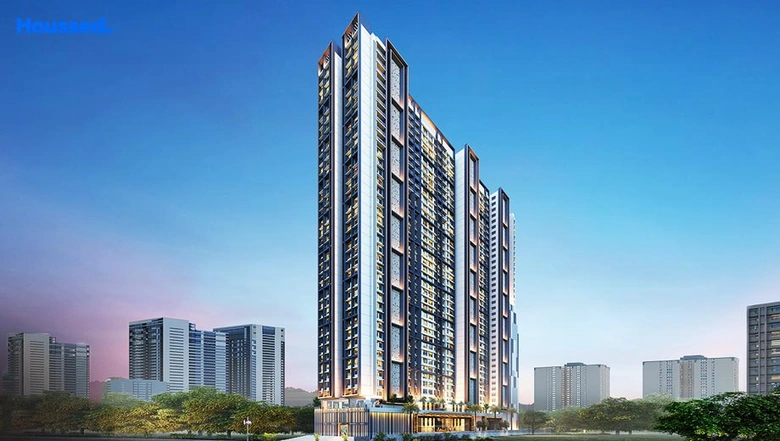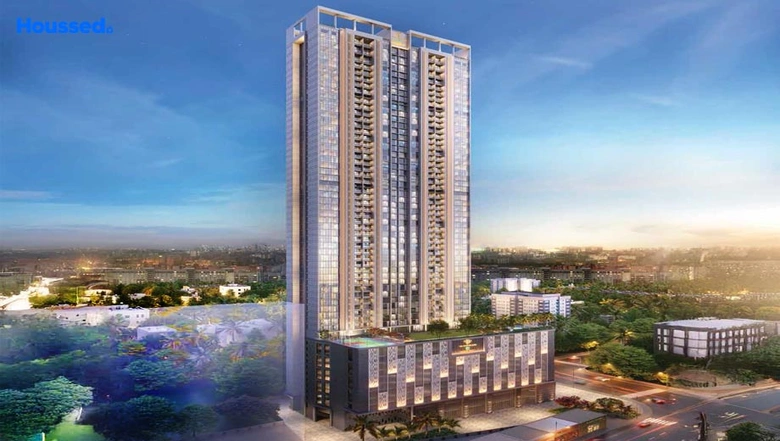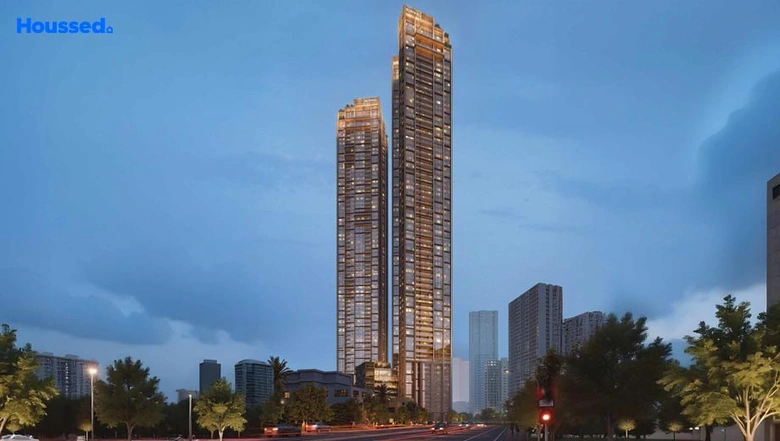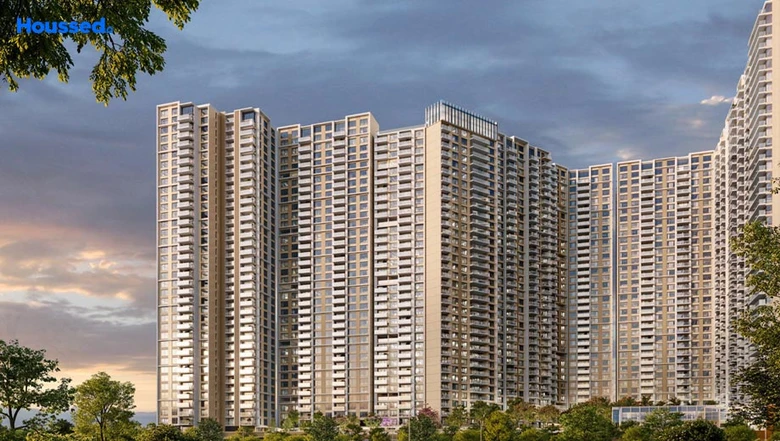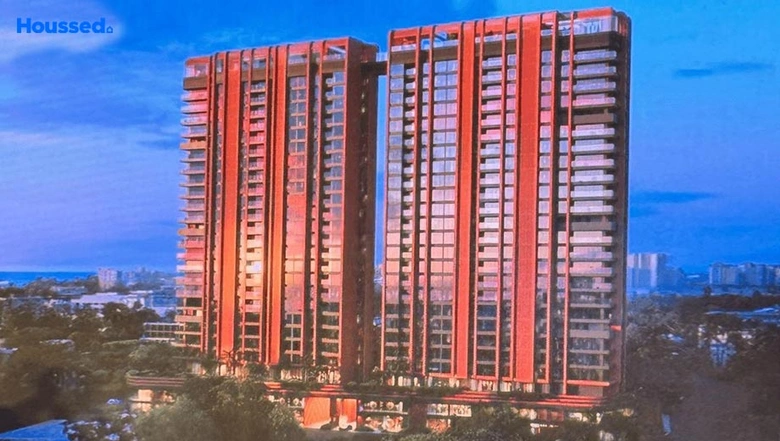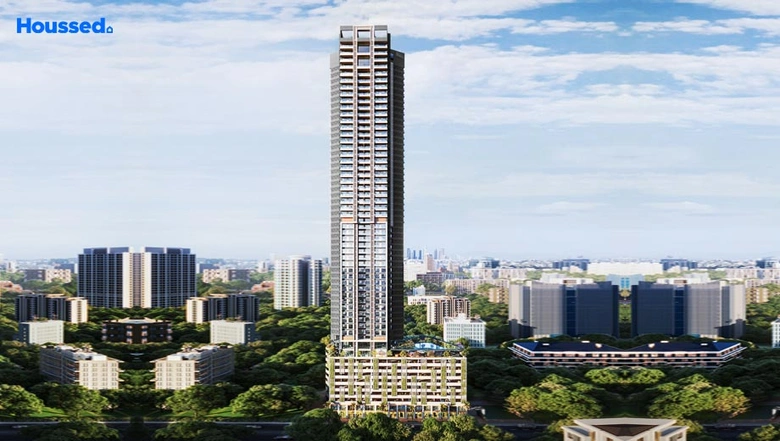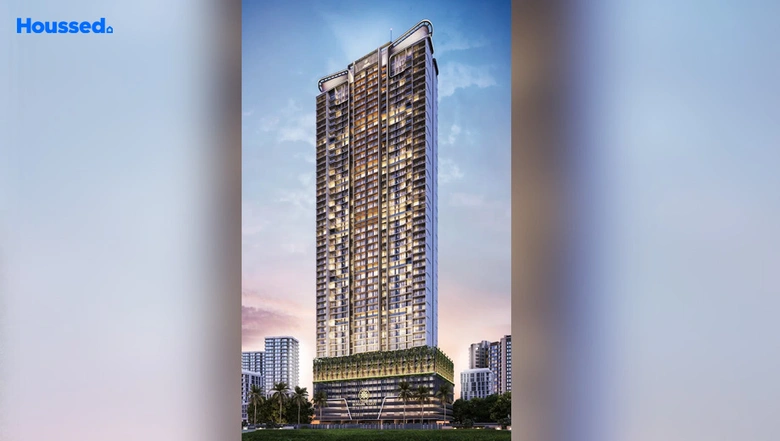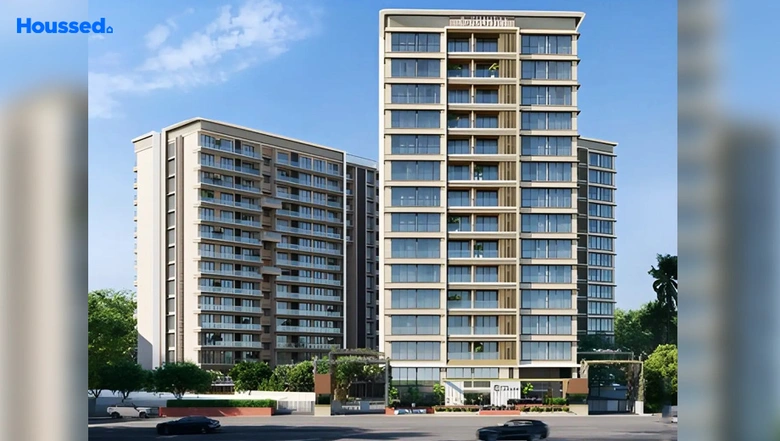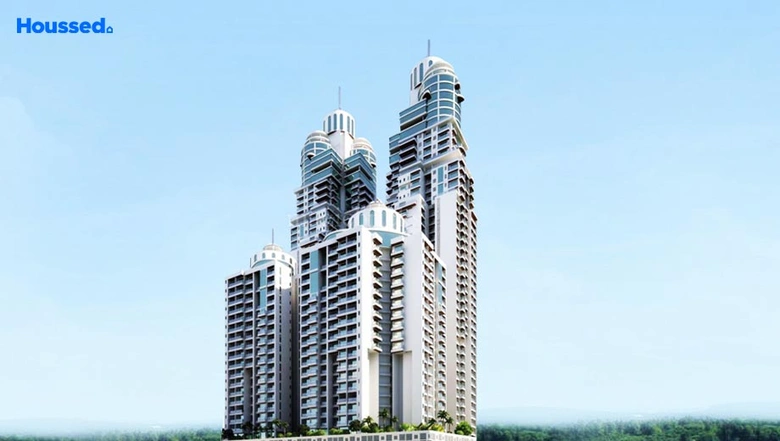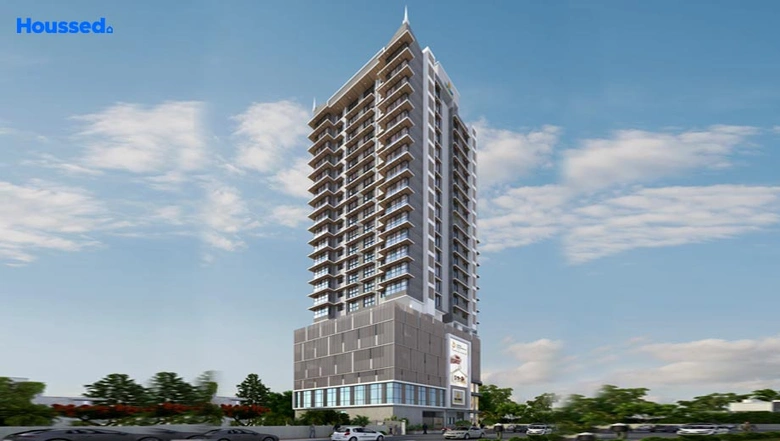Top 15 Posh Areas in Mumbai for Premium Real Estate
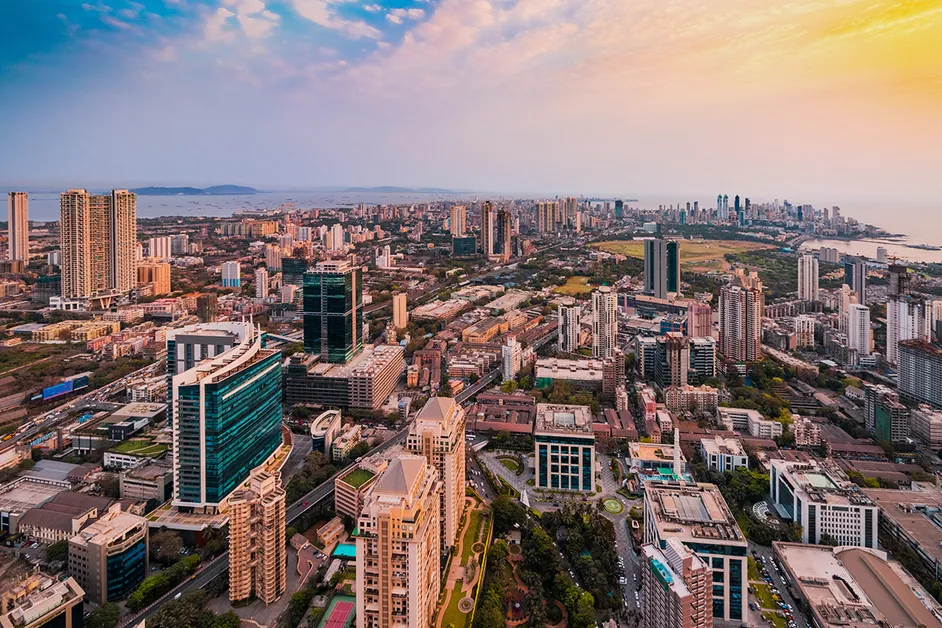
Welcome to Mumbai, a vibrant city in India that offers a blend of diversity, rich heritage, and modernity. Whether you're a local or a tourist, you can discover the upscale neighbourhoods of Mumbai through this interactive guide.
Let's explore 15 posh areas together, from the bustling streets of Bandra to the luxurious enclaves of Malabar Hill, where culture, commerce, and cosmopolitan living converge. As you read through, feel free to click on the links and explore more about each neighbourhood. Let's dive in!
What is a Posh Area?
A posh area is characterised by affluent residents who enjoy a comfortable and luxurious lifestyle. These neighbourhoods boast various amenities and facilities, including entertainment centres, upscale restaurants, luxury hotels, efficient commuting options, religious institutions, reliable electricity and water supply, and high-end shopping malls.
Top 15 Posh Areas in Mumbai
Juhu
Juhu, known as the "Beverly Hills of Bollywood," is an upscale area in Mumbai where many celebrities reside. It is home to celebrities like Akshay Kumar, Ajay Devgn, Amitabh Bachchan and more.
With an average property price of Rs. 45,014 per sq. ft., Juhu is also home to a scenic beach, renowned landmarks like JW Marriott and ISKCON Temple, and top-notch educational institutions like St Joseph High School and Mithibai College.
Additionally, Juhu boasts a vibrant food scene at Juhu Chowpatty, making it a popular destination for both residents and tourists.
Malabar Hills
Malabar Hills is a posh neighbourhood in South Mumbai that offers breathtaking views of the city skyline. It is well-known for housing government officials' residences and being home to business magnates.
Tourists are attracted to the Hanging Gardens, Jain Temple, and Banganga Tank. The property prices in this area range from Rs. 43,600 to Rs. 74,600 per sq. ft., making it one of the most desirable neighbourhoods in Mumbai.
Worli
Formerly a fishing village, Worli, a central island in Mumbai, has evolved into a prime residential locale. Its strategic position connects major commercial areas like Bandra Kurla Complex and Nariman Point.
The iconic Bandra-Worli Sea Link, completed in 2009, enhanced accessibility and raised property values. Notable residents include business tycoons like Narayan Murthy and celebrities like Virat Kohli.
Attractions include the Sea Link and residences of famous personalities. With an average property price of Rs. 45,600 per sq. ft., Worli stands as one of Mumbai's most sought-after areas.
Tardeo
Tardeo, situated in South Mumbai, is known for its luxury. Home to India's tallest building, The Imperial Towers, and renowned commercial hubs like AC Market Building and Film Centre Building, it's a hotspot for luxury living and business.
The area boasts the priciest flyover bridge in Mumbai, offering splendid views of the sea and racecourse. With plush residential complexes and world-class amenities, Tardeo is the epitome of extravagance, with an average property price of Rs. 46,800 per sq. ft.
Powai
In Powai, Mumbai, the average property price stands at Rs. 23,500 per sq. ft. This upscale neighbourhood is home to prestigious institutions like IIT Bombay and is surrounded by commercial hubs such as Hiranandani Business Park.
The robust connectivity to Kanjurmarg, Andheri, and Vikhroli Railway Stations makes it more demanding. Furthermore, the key attractions include the scenic Powai Lake and a plethora of multinational companies like TCS, Deloitte, and Cognizant, making it a sought-after residential and business destination.
Bandra
Bandra, a bustling suburb in Mumbai, is renowned for its vibrant atmosphere. With an average property price of Rs. 42,700 per sq. ft., it offers luxurious living spaces. Key attractions include the picturesque Bandstand area, home to celebrities like Salman Khan, with stunning views of the Arabian Sea.
Infrastructure highlights include landmarks like Bandra Fort and Mount Mary Church. Its meticulously planned layout and upscale amenities elevate residents' quality of life, making it one of Mumbai's poshest areas.
Lower Parel
Lower Parel, once dominated by mills, has evolved into a bustling corporate centre. It hosts top media houses, ad agencies, and financial firms, making it Mumbai's priciest locale. Dotted with eateries and pubs, it's a magnet for executives.
Kamala Mills is a hotspot here. Lower Parel appeals to urban enthusiasts with soaring towers, offices, and lively nightlife. Average property rates stand at Rs. 50,000 per sq. ft., reflecting its premier status in Mumbai's real estate scene.
Versova
Versova, a posh Mumbai neighbourhood just 10 km from Bandra, charms visitors with its beautiful beaches and historic Versova Fort. Once a hub for fishermen, it's now a hotspot for Bollywood stars like Priyanka Chopra and Manisha Koirala.
The area boasts trendy restaurants and pubs, like Tanjore Tiffin Room, Banana Leaf, SOCIAL, and more. With the property prices ranging from Rs. 18,900 to Rs. 31,500 per sq. ft. the key attractions, Versova Fort, Versova Beach, and Aksa Beach add to the luxury of the place.
Marine Lines
Marine Lines in Mumbai is a prime residential spot boasting premium apartments, villas, and bungalows with stunning sea views. It offers excellent connectivity, close to CBD and other posh areas like Fort and Malabar Hills.
The area is served by Marine Lines and Churchgate stations with the Mumbai Airport being 25 km away. With schools like St Xaviers and hospitals like Bombay Hospital nearby, along with malls such as CR2 and Palladium, Marine Lines offers a high-quality lifestyle. Property prices here are Rs. 31,800 per sq. ft. on average.
Mahalaxmi
Mahalaxmi, a premier residential area in Mumbai, boasts top-notch livability and commercial growth. Proximity to key employment hubs like the World Trade Centre and BKC adds to its allure.
Excellent connectivity via Eastern Express Highway and Bandra Worli Sea Link enhances its appeal. Nearby stations include Mahalaxmi and Chinchpokali. With renowned healthcare facilities like Sir HN Reliance Foundation Hospital and esteemed educational institutions like Poddar International School, the area offers a superior lifestyle.
Property prices range from Rs. 39,800 to Rs. 45,700 per sq. ft., making it an aspirational locale for luxury living with luxurious properties such as Lodha Bellevue, Lokhandwala Minerva, Lodha Solitaire, and many more.
Prabhadevi
Prabhadevi in Mumbai stands out for its high-end residential properties and thriving commercial scene. Luxurious homes, including independent houses and apartments, dominate the landscape such as Rohan Aquino, Suraj Ocean Star, 25 South, and more.
The average property price here is Rs. 32,800 per sq. ft. Notable attractions include High Street Phoenix and prestigious institutions like Our Lady of Salvation High School. The area boasts top-notch social infrastructure with renowned hospitals like ACI Cumbala Hill and premier shopping destinations like Palladium Mall.
Cuffe Parade
Cuffe Parade, at Mumbai's southern end, offers an average property price of Rs. 48,800 per sq. ft. Its prime location near Nariman Point and Colaba makes it desirable. This upscale neighbourhood hosts key attractions like Mumbai's World Trade Centre, Maker Towers, and the iconic Taj President Hotel.
It offers a prime location near Navy Nagar and Colaba's shopping district. The area offers top-notch infrastructure and is adjacent to Navy Nagar and Colaba's shopping district.
Breach Candy
Breach Candy, a posh area in Mumbai, offers a property price range of Rs. 42,000 per sq. ft to Rs. 64,700 per sq. ft . Its main attractions include the prestigious Breach Candy Club with a unique saltwater pool, the renowned Breach Candy Hospital, and the historic Mahalaxmi Temple by the sea.
Breach Candy is bordered by Mahalaxmi in the north and Malabar Hills in the south, which adds up to make it one of the posh areas in Mumbai. With top-notch schools and colleges, Breach Candy stands as a prime residential choice in South Mumbai.
Colaba
Colaba, a premier area in Mumbai, boasts an average property price of Rs. 41,200 per sq. ft. It is situated in South Mumbai and offers excellent connectivity to key locations like Chhatrapati Shivaji Maharaj Terminus and Churchgate.
Renowned for its blend of heritage and modernity, Colaba features iconic landmarks such as the Gateway of India and The Taj Mahal Palace. It's a cultural hub, hosting theatres, art galleries, and historic cafes like Leopold Cafe. The area is embellished with the residences of Ratan Tata and Ravi Shastri.
Lokhandwala Complex
Lokhandwala Complex, formerly a marshland, was acquired by Siraj Lokhandwala in 1968 and has now transformed into a high-end area in Andheri West, Mumbai.
It has fancy malls, restaurants, and cafes, along with popular residential projects like Mayfair Page 3 and Golden Heights. Walavalkar Park is a major attraction in the area and the property prices average at Rs. 32,400 per sq. ft.
Things to Consider Before Moving to Mumbai
Climate of Mumbai
Mumbai experiences a tropical climate characterised by high humidity levels throughout the year. The city's average annual temperature ranges from 25°C to 33°C.
During the monsoon season, which typically lasts from June to September, Mumbai receives an average rainfall of around 2,200 mm, leading to waterlogging and flooding in low-lying areas, affecting transportation and daily life.
Lifestyle of Mumbai
With a population exceeding 20 million, Mumbai is India's most populous city and a melting pot of cultures. Its cosmopolitan lifestyle is reflected in its diverse culinary scene, comprising street food vendors, high-end restaurants, and local eateries known as "Khau Galli."
The city has a thriving entertainment industry, with Bollywood films being produced here. Moreover, Mumbai's vibrant nightlife includes numerous bars, clubs, and cultural events catering to varied tastes and preferences.
Cost of Living in Mumbai
Mumbai is one of the costliest cities in India to reside in. The average monthly rent for an apartment is around Rs. 5,000 to Rs. 12,000 in the city centre and Rs. 30,000 to Rs. 50,000 outside it.
However, shared accommodations and co-living spaces are available for Rs. 5,000 to Rs. 8,000 per month.
Space of Living in Mumbai
As one of the most densely populated cities globally, Mumbai faces significant challenges in providing adequate living space for its residents.
Mumbai's average residential property size is around 450 to 600 square feet, significantly smaller than in other Indian cities.
Traffic in Mumbai
Mumbai's road network struggles to cope with the severe traffic congestion, especially during peak hours. The city's infamous traffic jams often lead to long commute times, with an average one-way commute of 45 to 60 minutes.
According to recent data, Mumbai has over 3.3 million registered vehicles, exacerbating congestion on its already overcrowded roads.
Conclusion
What is a posh area?
A posh area is where rich people live in luxury. They have nice restaurants, good schools, and fancy shops. It's a comfortable and exclusive place to live.
Top 15 posh areas in Mumbai
- Juhu
- Malabar Hill
- Worli
- Tardeo
- Cuffe Parade
- Breach Candy
- Bandra
- Lower Parel
- Colaba
- Powai
- Versova
- Marine Lines
- Mahalaxmi
- Prabhadevi
- Lokhandwala Complex
Things to consider before moving to Mumbai
- Climate of Mumbai
- Lifestyle of Mumbai
- Cost of living in Mumbai
- Space of living in Mumbai
- Traffic of Mumbai
FAQ's
Malabar Hill stands out as one of Mumbai's most posh areas, with stunning views and exclusive residences, including homes of government officials and business magnates.
Mumbai has several posh areas, including Juhu, Malabar Hill, Worli, Tardeo, Cuffe Parade, Breach Candy, Bandra, Lower Parel, Colaba, Powai, Versova, Marine Lines, Mahalaxmi, Prabhadevi, and Lokhandwala Complex.
The top three posh areas in Mumbai are Malabar Hill, Juhu, and Bandra, known for their affluent residents, luxurious amenities, and high property prices.
Celebrities often reside in upscale neighbourhoods like Juhu, Bandra, and Malabar Hill, known for their luxurious residences and proximity to entertainment hubs.
Rich people often choose to live in affluent neighbourhoods like Malabar Hill, Tardeo, and Cuffe Parade, known for their high property prices and luxurious amenities.
Yes, Bandra is considered one of Mumbai's posh areas, renowned for its vibrant atmosphere, upscale residences, and scenic views of the Arabian Sea.
Yes, Juhu is a posh area in Mumbai, often called the "Beverly Hills of Bollywood," boasting luxurious residences, a scenic beach, and a vibrant cultural scene.
Yes, Versova is considered a posh area in Mumbai, attracting residents with its beautiful beaches, trendy restaurants, and luxurious residences.
Yes, generally, posh areas in Mumbai are considered safe at night, with well-lit streets, security measures, and active communities ensuring residents' safety and security.
